We’ve seen it all — from blokes dangling off buildings without secondary fall arrest, to gear so crusty it looked like it survived Cyclone Tracy. So if you’re wondering what equipment is needed for rope access, here’s the no-BS guide from the crew who’ve lugged it all up a scaffold in 40-degree heat. This gear list isn’t just about ticking boxes — it’s about coming home in one piece.
Let’s get one thing straight — hanging off the side of a high-rise building like a human spider is no joke. Rope access isn’t for cowboys or thrill-seekers chasing a TikTok moment. It’s a serious trade backed by strict safety systems, certified training, and the right kit. And without the right gear? You’re not just unsafe — you’re off the job.
Our Rope Setup
There’s no room for guesswork at height. Below is your go-to list of rope access equipment. We’ll break it down into primary equipment, secondary gear, and mobile fall arrest devices — the whole rope access equipment repertoire that gets the job done safely.
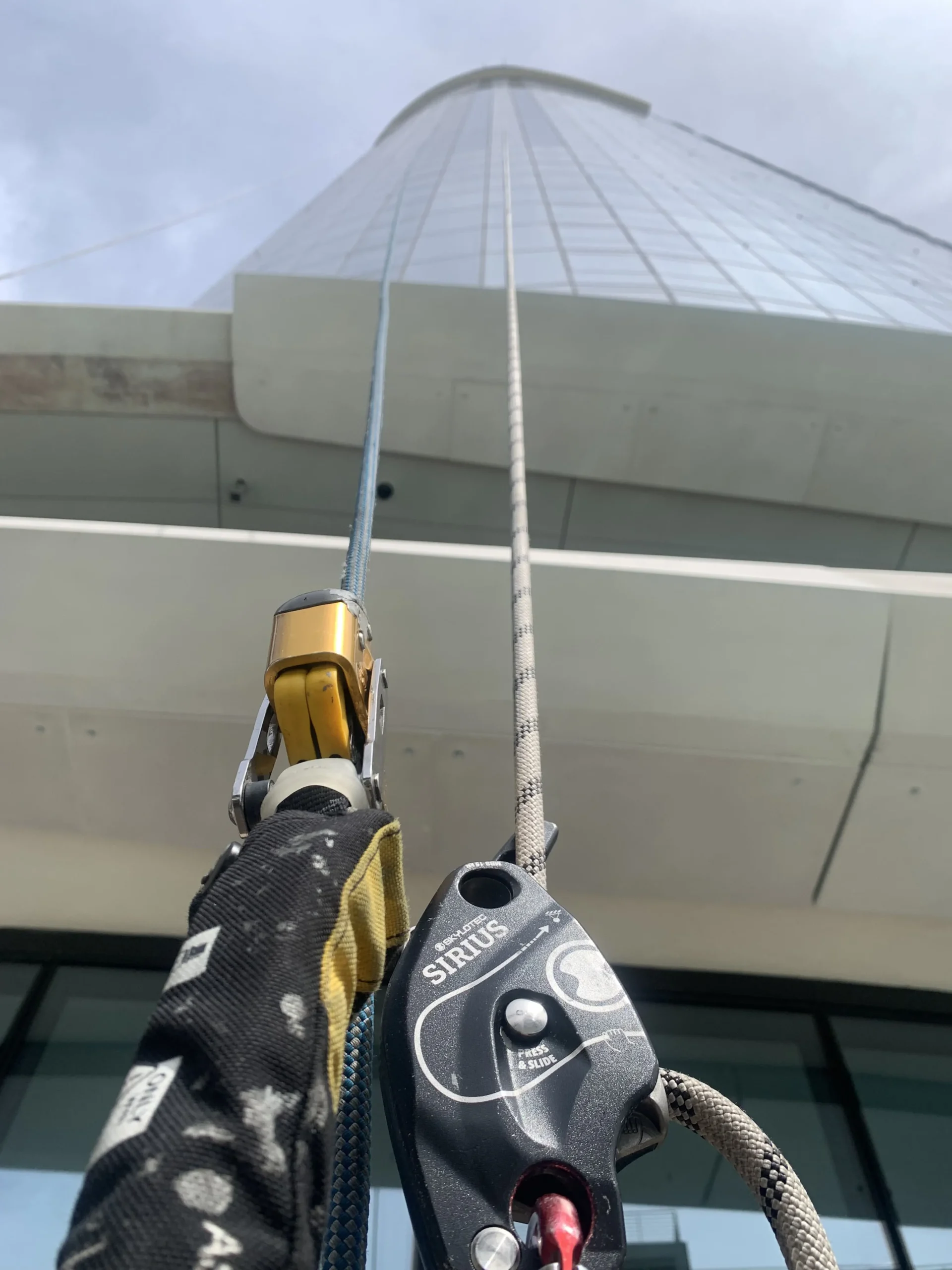
1. Main Rope and Backup Rope
Your ropes are your lifeline — literally. No frayed bargain bin specials here.
- Primary rope: Carries your working load
- Secondary rope (backup): Engages if your main system fails
- Type: Static kernmantle (10.5mm–11.5mm), certified for rope access technicians
- Strength: Must exceed 22kN
This core rope access equipment forms the literal backbone of every shift in height. Always choose high-quality, reliable, and safe equipment here — there’s no second chance with dodgy rope.
2. Harnesses: Full-Body, Chest and Seat Options
This is the one piece of equipment you wear all day. It needs to fit right and function even better.
- Seat harnesses: The most common base harness for rope work
- Chest harnesses: Used alongside a seat harness for proper posture
- Full-body harnesses: Required when fall arrest protection is involved
- Types of harnesses: Should be EN-certified, padded, breathable, and well-fitted
- Connected via: Lanyards that attach to both dorsal and sternal points
A top-quality harness is worth its weight in gold. We’ve seen bruised thighs and worse from dodgy designs. Every professional rope access technician should have a well-fitted harness with a clear inspection history.
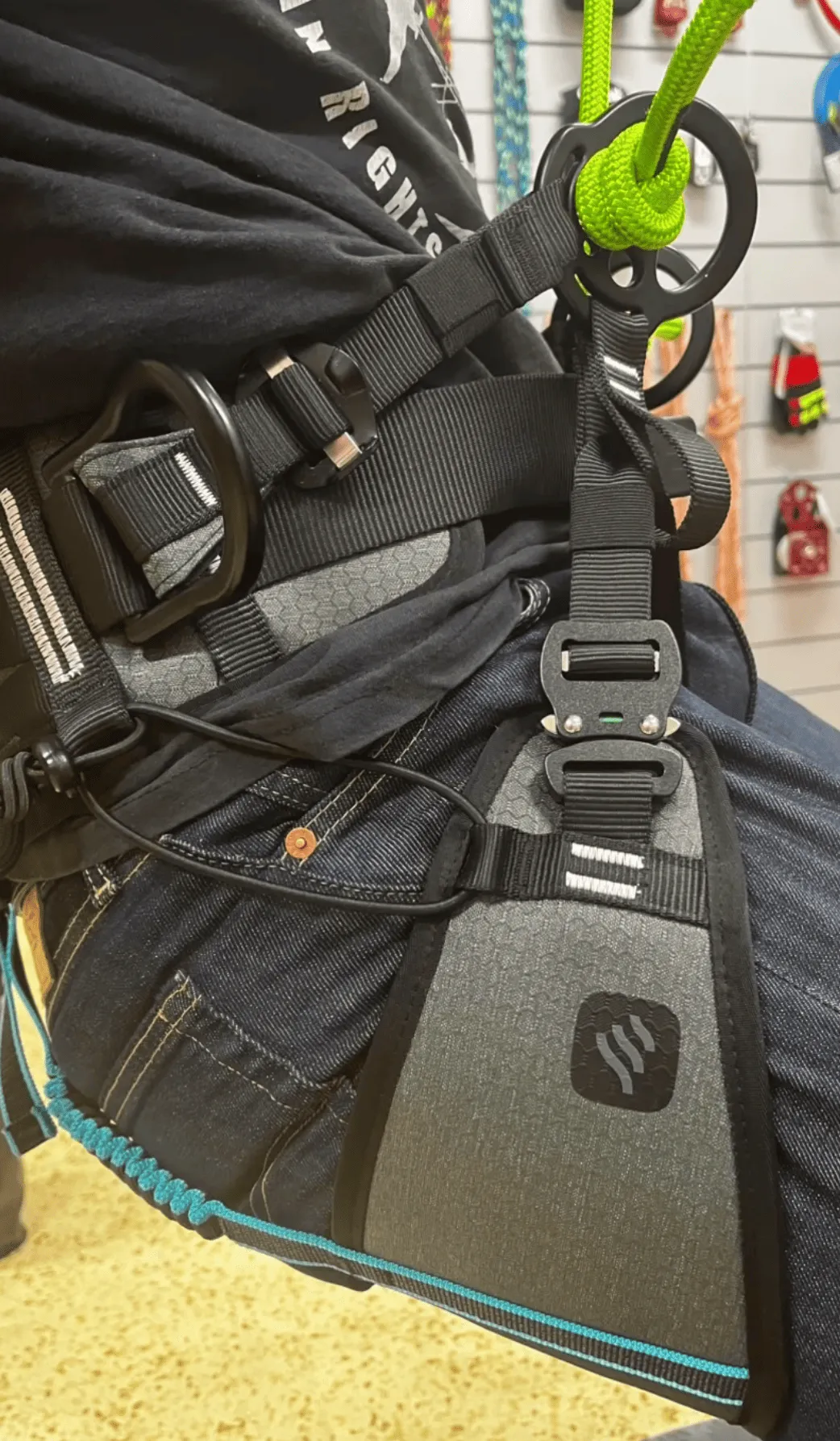
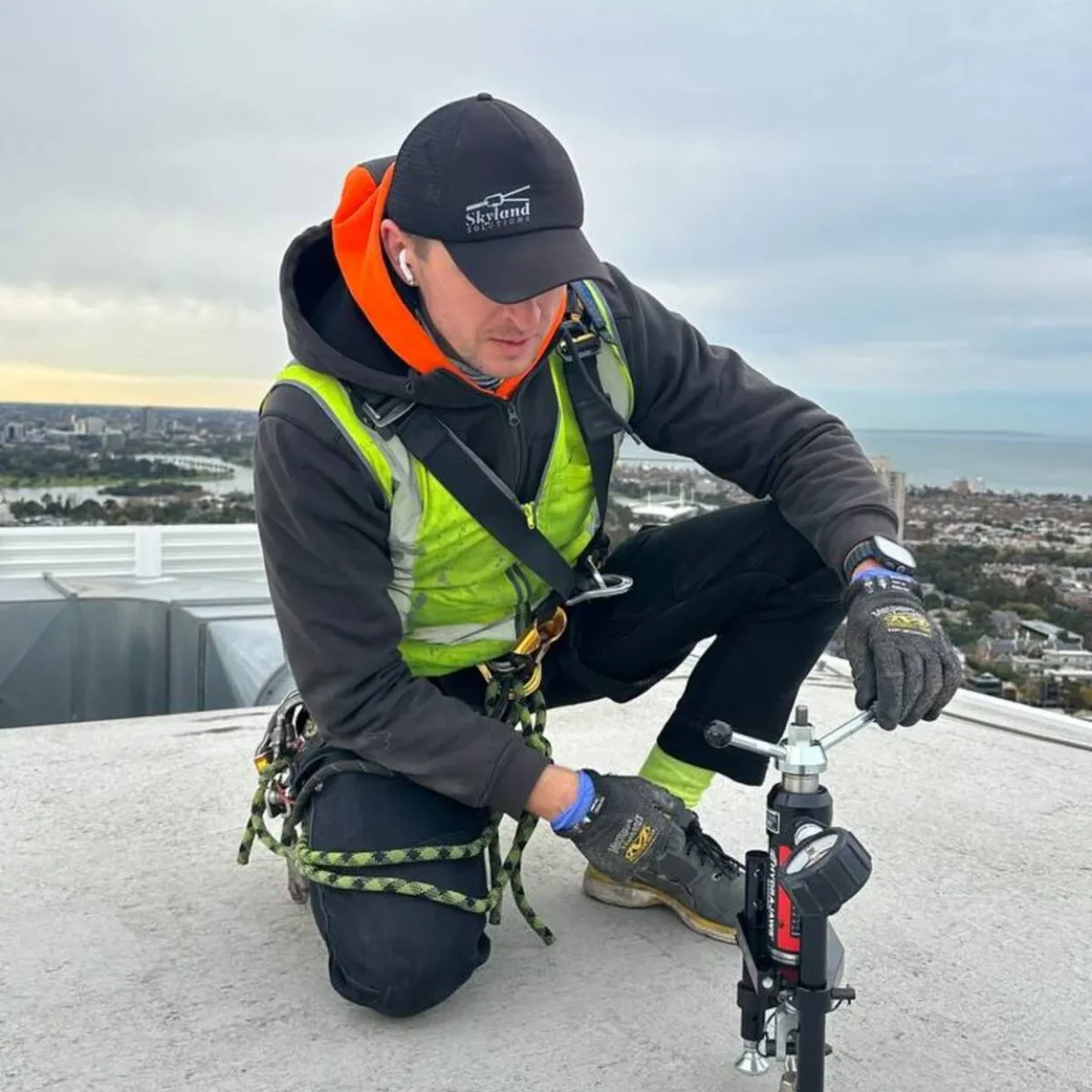
3. Descenders (Controlled Descent Devices)
This mechanical device is what gets you down the rope safely — and under control.
- Popular models: Petzl ID, Rig, CT Sparrow
- Features to look for: Auto-locking, anti-panic function, rope diameter compatibility
- Built for: Industrial use — not sport climbing
You’ll use this primary piece of rope access equipment every single day. If it’s not smooth, it’s not safe.
4. Ascenders (Hand, Chest, and Primary Ascenders)
Got to go up? You’ll need primary ascenders and possibly a backup.
- Hand ascender: For climbing rope one-handed
- Chest ascender: Sits tight to the harness and supports upright climbing
- Mounted on: The rope above you and paired with foot loops or stirrups
These mechanical devices are small but mighty. Without them, ascending becomes a full-body workout you didn’t ask for.
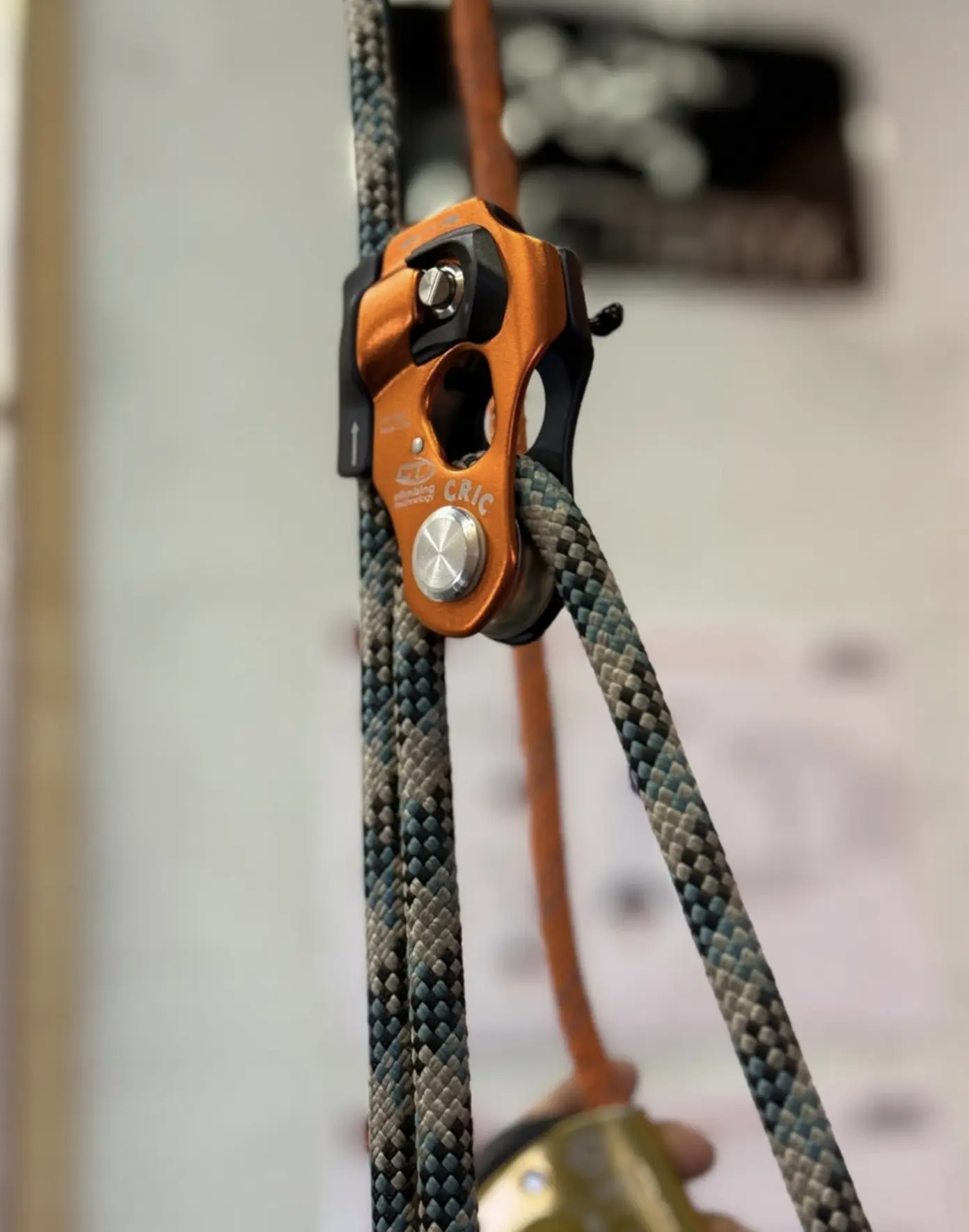
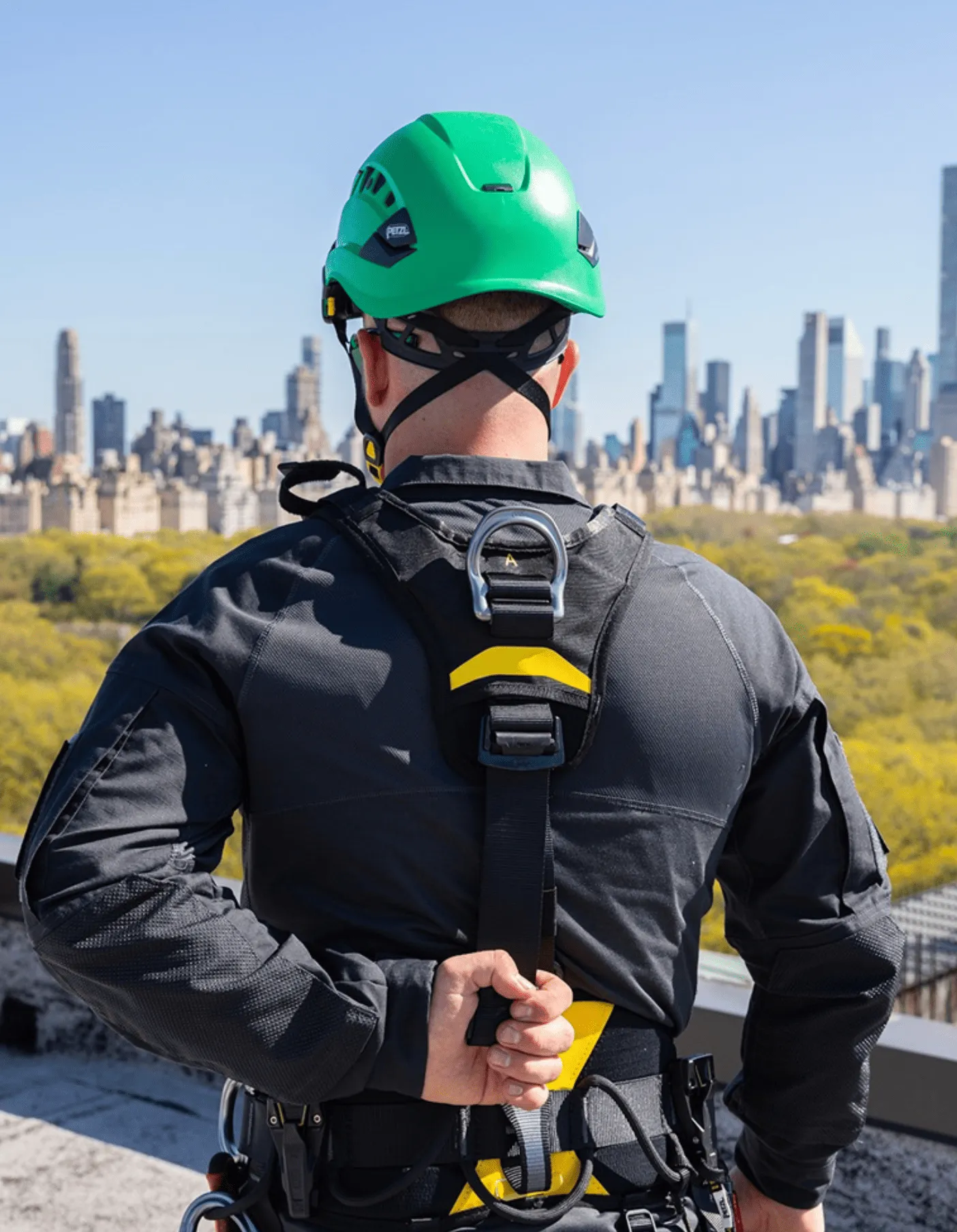
5. Back-Up Device (Mobile Fall Arrest Device)
These mobile fall arrest devices are attached to your secondary rope and engage during a fall.
- Common choices: Petzl ASAP, Goblin, Buddy
- Hands-free operation preferred — it runs with you
- Locks on acceleration, not just position
If you’re not running a backup device, you’re not compliant — and certainly not safe.
6. Carabiners (Locking Steel and Aluminium)
It may seem small, but every carabiner is a mission-critical piece of equipment. One failure, and it’s game over.
- Locking only — screw gate or triple-action
- Steel for anchors, aluminium for personal use
- Shape matters: Go for oval or D-shape for rope work
Label your gear. Mix-ups on site are a headache and a hazard.
7. Anchor Systems, Slings & Triple Pulleys
Anchors are the unsung heroes of any rope system. Without a solid base, you’re just swinging on hope.
- Temporary and fixed anchors must be rated for human suspension
- Slings (22kN+): Used to wrap beams or rails
- Triple pulleys: Essential for hauling and rescue setups
- Anchor inspections: Log it, tag it, back it up
Height Dynamics and other reputable suppliers offer certified anchor gear that won’t let you down mid-rappel.
8. Rope Protection and Edge Rollers
Got concrete corners or rough surfaces? Your ropes will pay the price.
- Rope protectors: Prevent sheath wear
- Edge rollers: Reduce friction and heat
- Soft alternatives: Hose pipe? Nah. That’s a shortcut to shredded rope.
This is one area where proper equipment really makes or breaks your system.
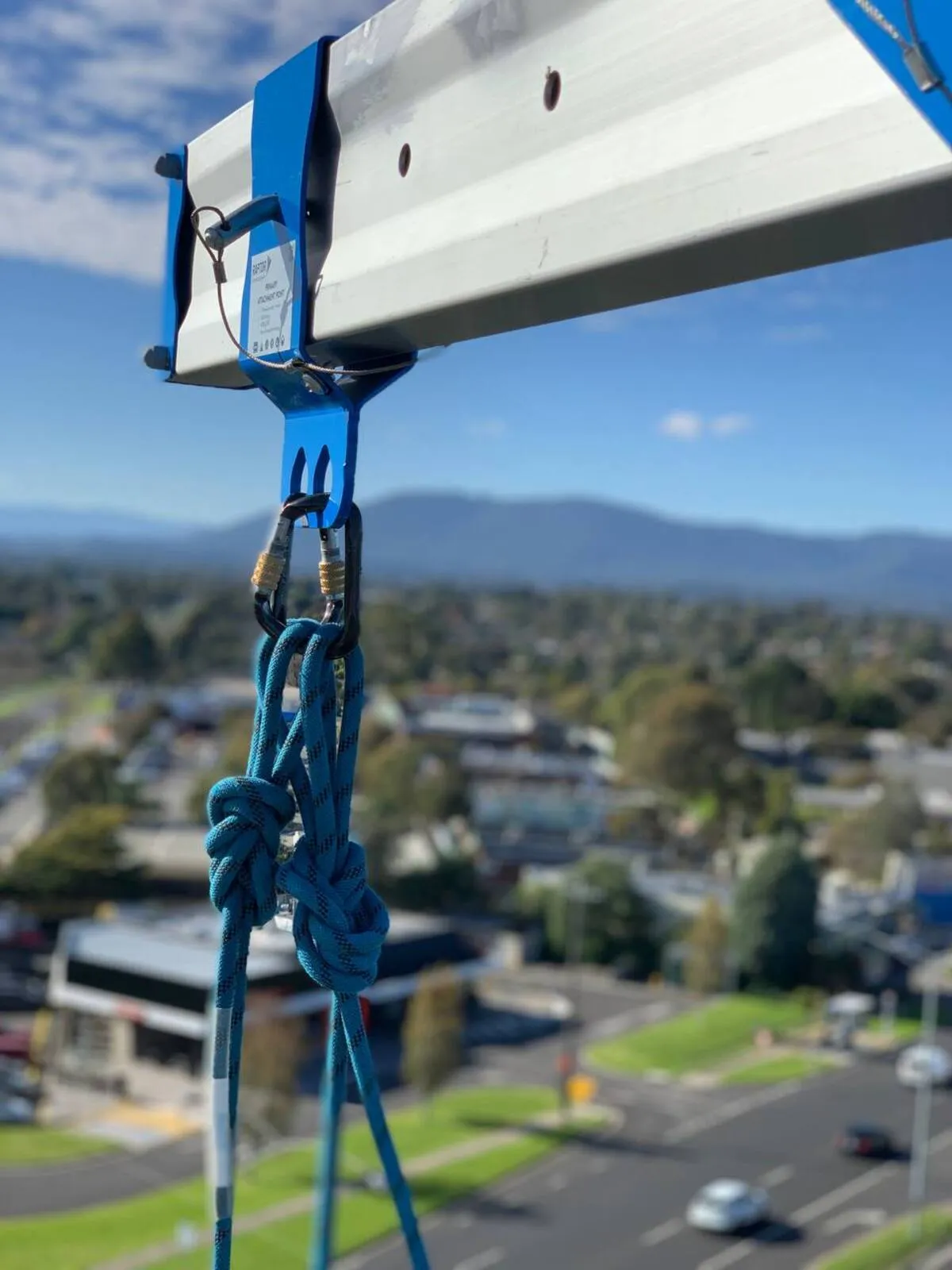
9. Tool Lanyards, Rope Bags, and Gear Holders
Dropped tools aren’t just expensive — they’re dangerous.
- Tool lanyards: Bungee or reel types
- Rope bags: Keep things tidy and dry
- Gear holders: Attach directly to your harness via lanyards
Good organisation of your harness makes you a safer, more efficient tech. A tangled gear loop is a tradie’s worst nightmare at 20 metres up.
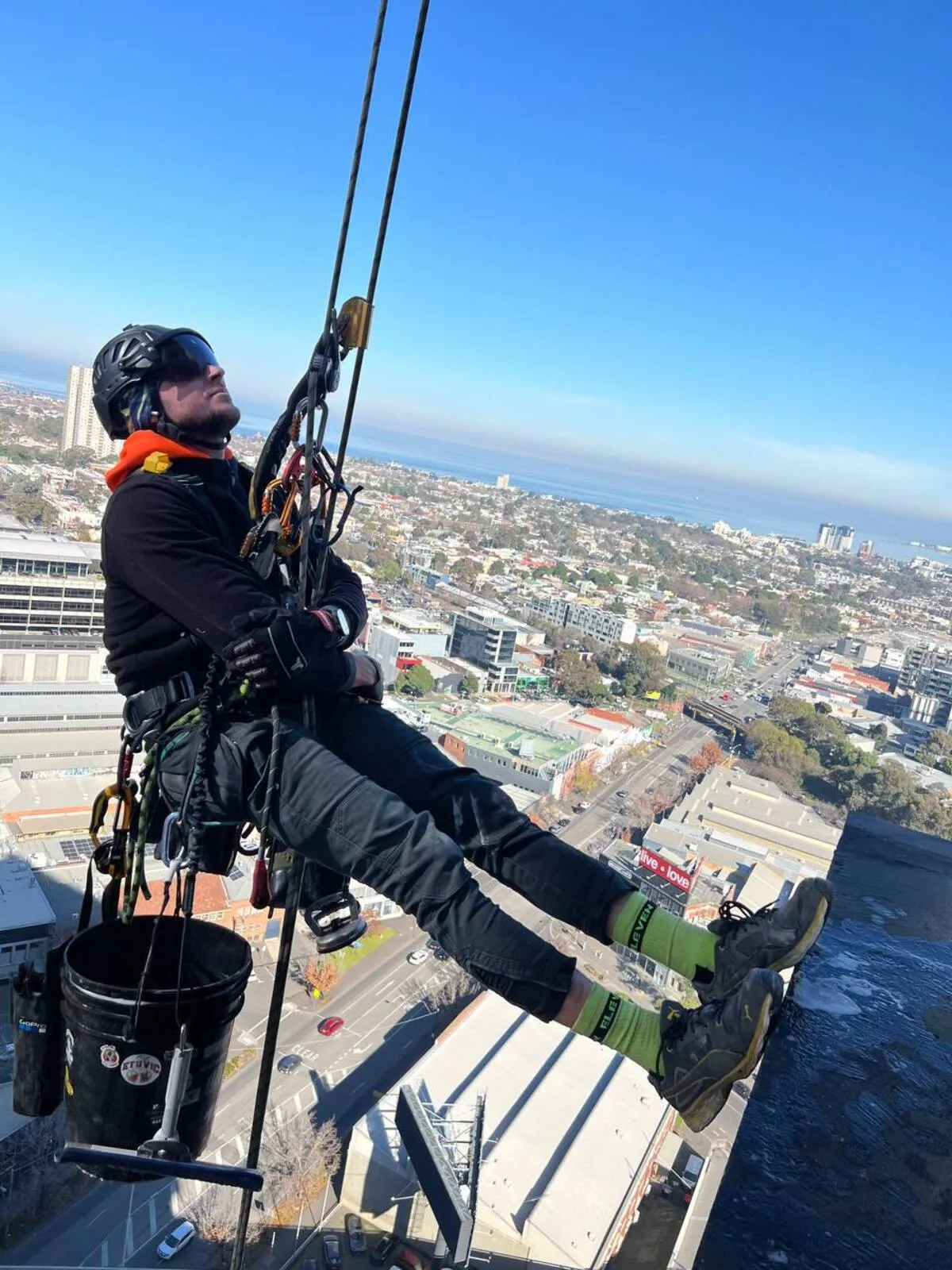
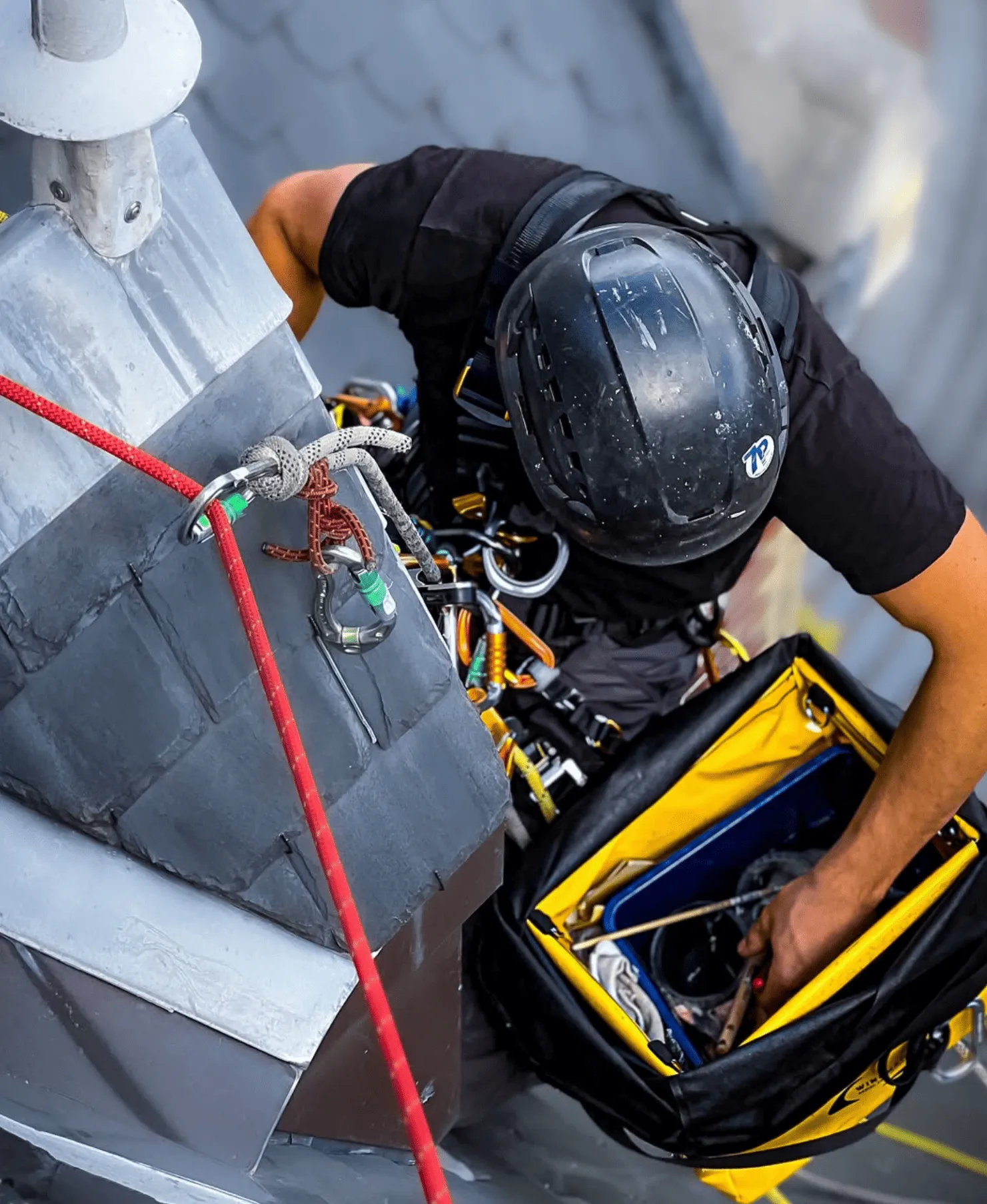
10. Rescue Kit and Mechanical Advantage Systems
Every rope tech needs to know how to get a mate out of trouble — fast.
- Pre-rigged rescue bags with descender and hauling line
- Triple pulleys for efficient lifting
- Cutting tool: Shears, not Stanley knives — trust us on that
Without a plan, a stuck worker can become a fatality. We don’t cut corners here. And we don’t work with crews who do.
Know the Standard
Australian rope access jobs fall under AS/NZS 4488. Here’s what matters:
- Training: IRATA, SPRAT, or nationally recognised equivalents
- Paperwork: SWMS, rescue plan, equipment registers
- Inspection routines: Pre-use, weekly, and 6-monthly logged checks
- PPE policies: Set by Safe Work Australia and enforced by site managers
Using top-quality rope access equipment means nothing if you don’t follow procedure. It’s not just about gear — it’s about how you use it.
Just ask the Window Cleaning Melbourne Crew, who’ve spent years tackling high-rise glass in Melbourne’s gustiest corners.
Secondary Equipment
These bits might not carry your body weight, but they still deserve a place in your rope bag:
- Gloves: For grip and rope burn protection
- Haul kits: For lifting gear to working height
- Radio comms: For complex sites
- First aid pouch: Always on you, not just the site manager
Secondary equipment might not headline the job, but in the real world — it saves time, effort, and sometimes, your backside.

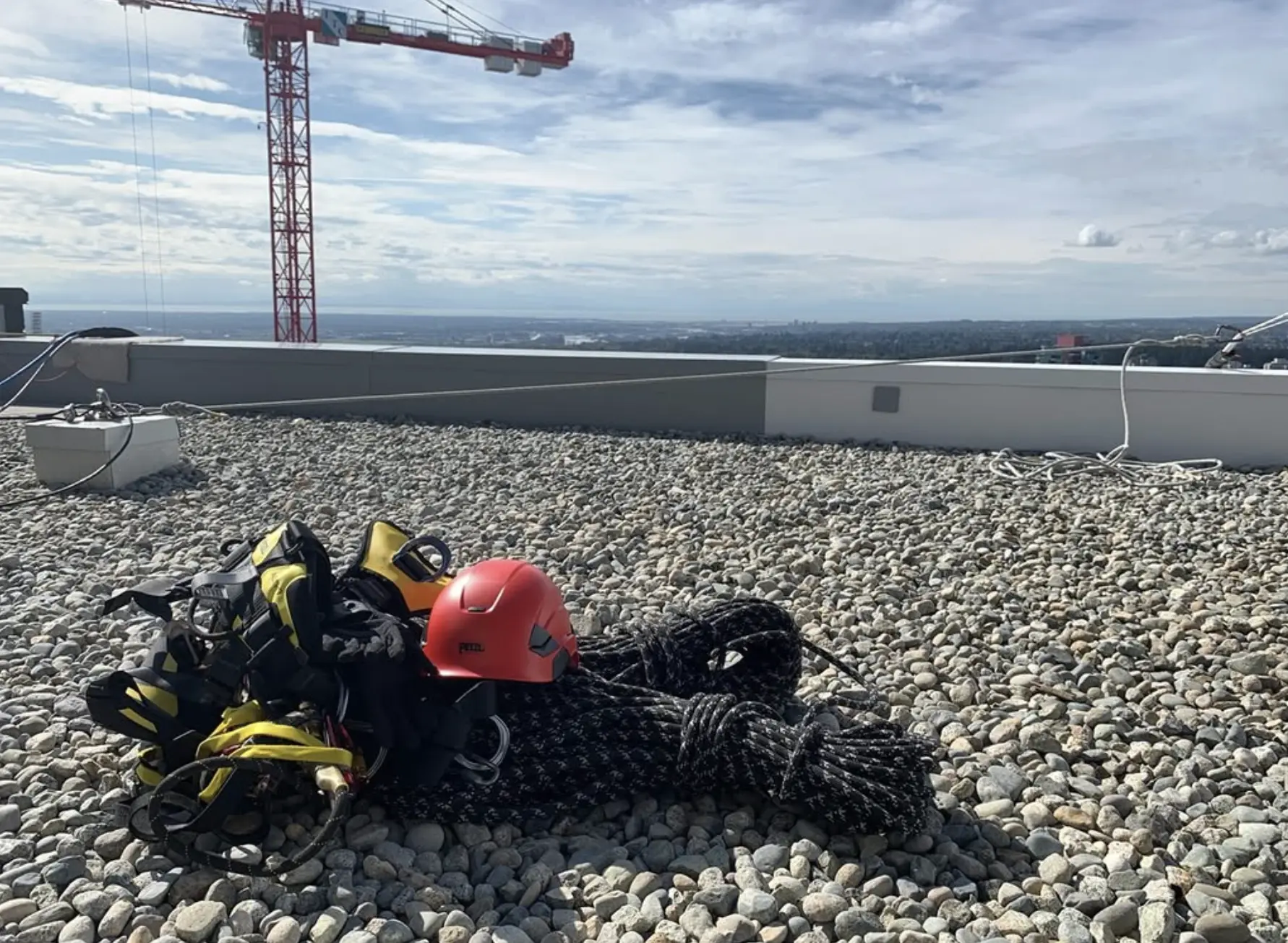
Essential Equipment
Top-quality rope access equipment isn’t just a sales pitch — it means:
- Certification to EN, AS/NZS, or ANSI standards
- Strong load ratings (15–30kN depending on use)
- Durable against weather, UV, and mechanical wear
- Designed for professional rope access technicians, not climbers or weekend warriors
We’ve seen pieces of equipment crack under pressure — literally. You don’t want to learn that lesson mid-shift.
Quickfire Checklist
- Static rope (main + backup, certified)
- Full-body harness or seat + chest harness
- Certified descender
- Primary ascenders (hand + chest)
- Mobile fall arrest device (backup)
- Locking carabiners
- Slings, anchors, triple pulleys
- Rope protection gear
- Tool lanyards and storage
- Rescue kit + mechanical advantage
- Secondary gear (gloves, comms, first aid)
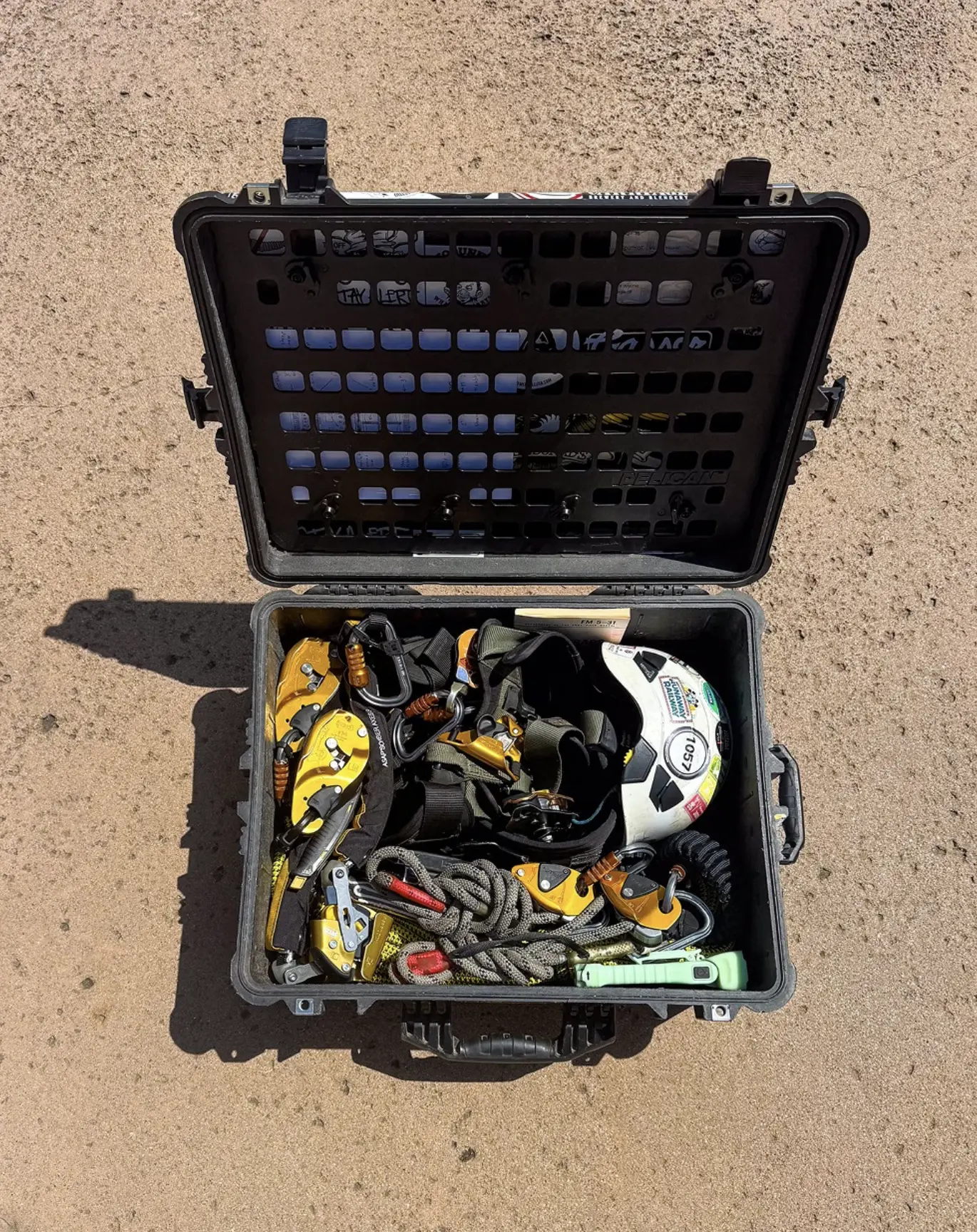
FAQ
What’s the difference between seat, chest, and full-body harnesses?
Seat harnesses are for work positioning; chest harnesses offer posture support; full-body harnesses are for fall arrest situations. Often used in combination, depending on the job.
Do I need a rescue kit on every site?
Yes. A rope access team must always have a site-specific rescue plan — and proper equipment to execute it, including haul systems and cutting tools.
Is there a legal standard for rope access equipment in Australia?
Absolutely. All gear must meet AS/NZS 4488 and be inspected regularly. Using non-compliant or damaged gear can lead to fines or worse.
Can climbing gear be used for rope access?
No. Climbing gear may not meet the load or wear specs required for industrial rope access. Always choose gear designed for professional use.
What brand of rope access gear is best?
Brands like Petzl, CAMP, Skylotec, and Height Dynamics supply top-tier gear tested in real-world conditions. But what matters most is proper use and maintenance.
